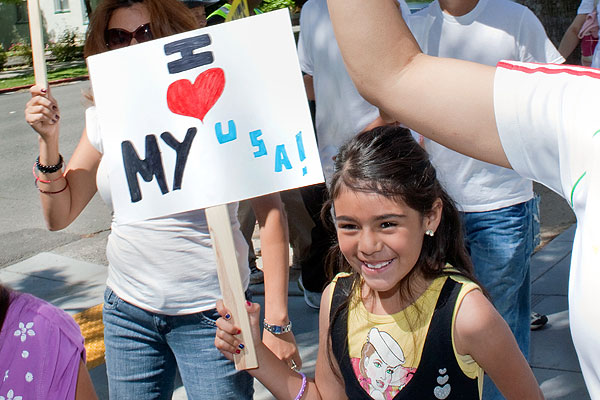
A couple weeks ago Tribune reporters Gary Marx and David Jackson completed their outstanding Across the Border, Beyond the Law series about how easily fugitives are able to flee the country and how hard it is to bring them back to face justice, even when they're cashing police pension checks. Among the problems that Marx and Jackson identify are legal loopholes that allow families to aid fugitives without fear of reprisal, and a lack of resources to complete the expensive process of extraditing suspects, not to mention locating them, though one of the reasons the series is so effective is that the two reporters managed find fugitives law enforcement can't or hasn't tracked down.
Meanwhile, the Chicago Reporter's most recent cover story takes a look at how broken the process is from the other side in a long piece on Secure Communities, a federal program meant to deport violent criminals. It's an even greater failure of justice, at least if you subscribe to Blackstone's ratio:
In Illinois, 46 percent of 3,023 people who were booked into immigration custody under Secure Communities between Nov. 24, 2009, and July 25, 2011, were never charged with, or convicted of, the crimes for which they were arrested, shows the Reporter analysis of the U.S. Department of Homeland Security records.
The Secure Communities program has been taking a lot of heat lately, as the New York Times noted in the wake of a joint study by the Berkeley and Cardozo law schools: "Secure Communities By the Numbers: An Analysis of Demographics and Due Process":
In a random sample provided by Immigration and Customs Enforcement of 375 deportation cases under the program that was analyzed by the law schools, researchers found five cases of United States citizens held by immigration agents, with no clear reason specified in the records. Although the number of citizens is small, their presence in the sample raised concerns because immigration authorities do not have legal powers to prosecute or deport Americans.
In August, the Los Angeles Times called for the program's dismissal:
States signed up for Secure Communities because they thought it would make their neighborhoods safer by getting serious criminals off the streets. But the government's own data indicate that more than half of those deported under the program were undocumented immigrants with no criminal record or only minor ones — not violent felons.
What's the problem? As the Berkeley/Cardozo study notes, ramping up hundreds of thousands of specialized court cases in a couple years is no small feat:
Even those noncitizens entitled to have a hearing may not always appear before a judge because of the enormous backlog in the system. Currently, approximately 285,000 cases are waiting to be heard in the immigration courts. Recent research suggests that as a result of lengthy wait times, more immigrant detainees give up valid claims for relief or agree to waive their rights and sign stipulated orders of removal, presumably to get out of custody sooner. Although the dataset for this report did not record when there was a stipulated order of removal, we do know that individuals detained through Secure Communities wait an average of 88 days, nearly three months, for an immigration judge decision.
Is there hope for addressing immigration in a sensible way? Actually, I think so, and here's an example of why: "As Small Towns Wither on Plains, Hispanics Come to the Rescue." And it's not just small towns: the Hispanic boom in Chicago and its suburbs has stanched the region's bleeding population, and balanced out the city's age demographics. The immigration system is flawed throughout, but economic necessity and demographic reality may do what other policy measures haven't: force rational revisions.
Photograph: Robert Couse-Baker (CC by 2.0)


